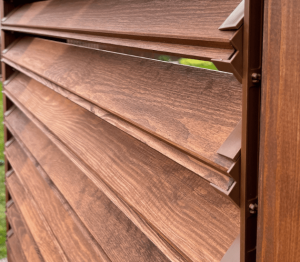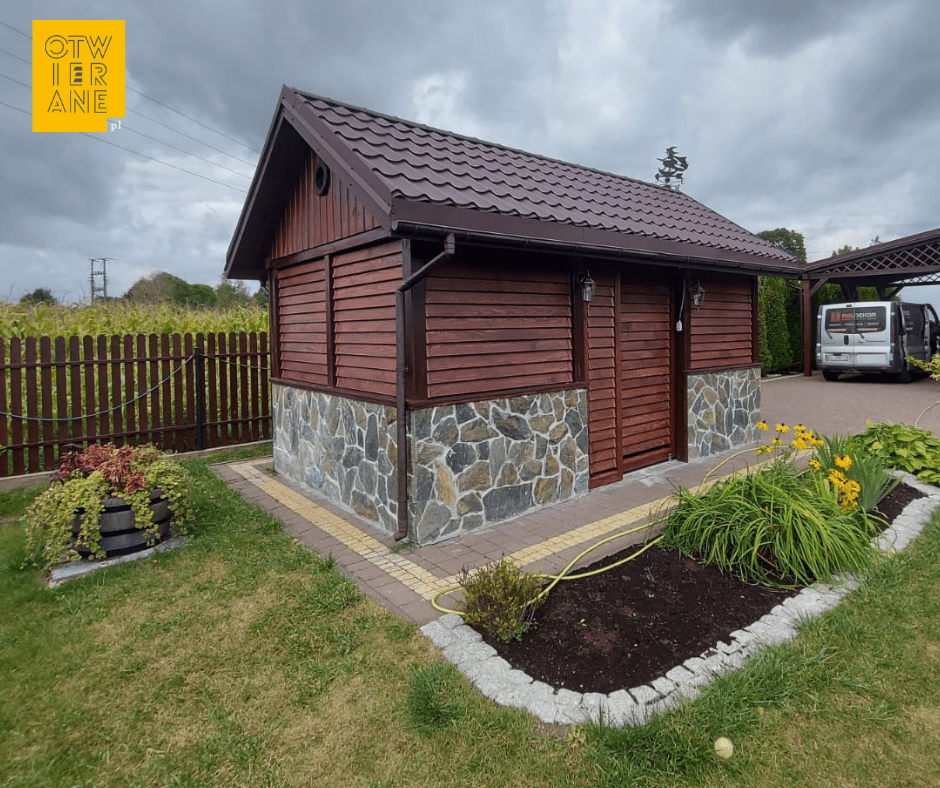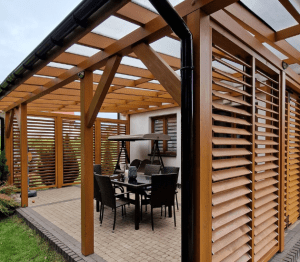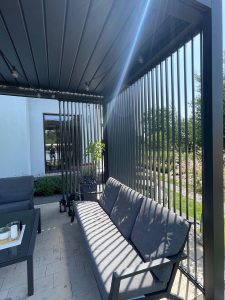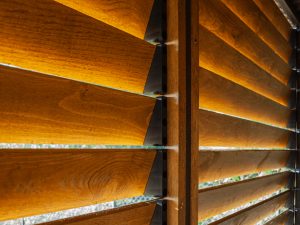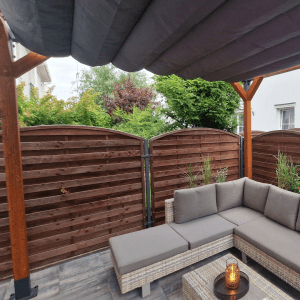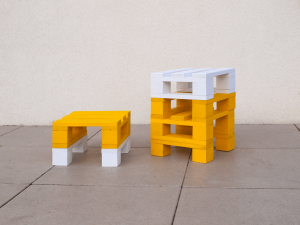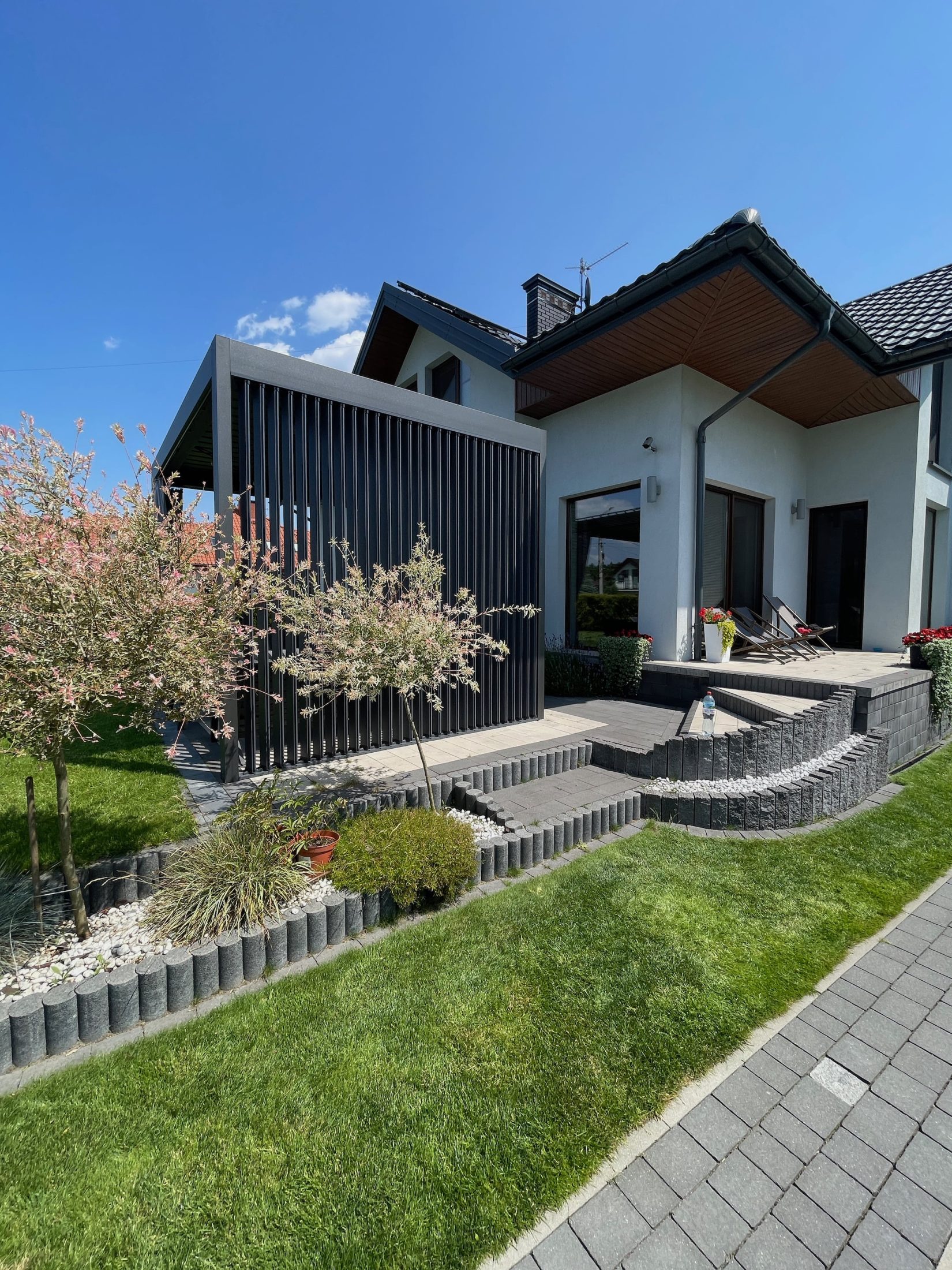
Garden pergola - read before you buy
A garden pergola is the ideal solution for those looking for shade in the garden. However, before you make your purchase, see what to look out for when choosing this type of canopy.
Garden pergola is a type of small garden architecture. It is a simple structure made of wood or metal whose primary function is to provide shade in the garden or on the terrace. It can be free-standing, stand on a terrace or otherwise be adjacent to a building.
Construction of the pergola consists of vertical supports and a canopy. More elaborate models also feature side walls and sliding doors.
So that a garden pergola can stand for years on outdoors must be made of high quality materials and constructed to minimise the damaging effects of water, sun or frost.
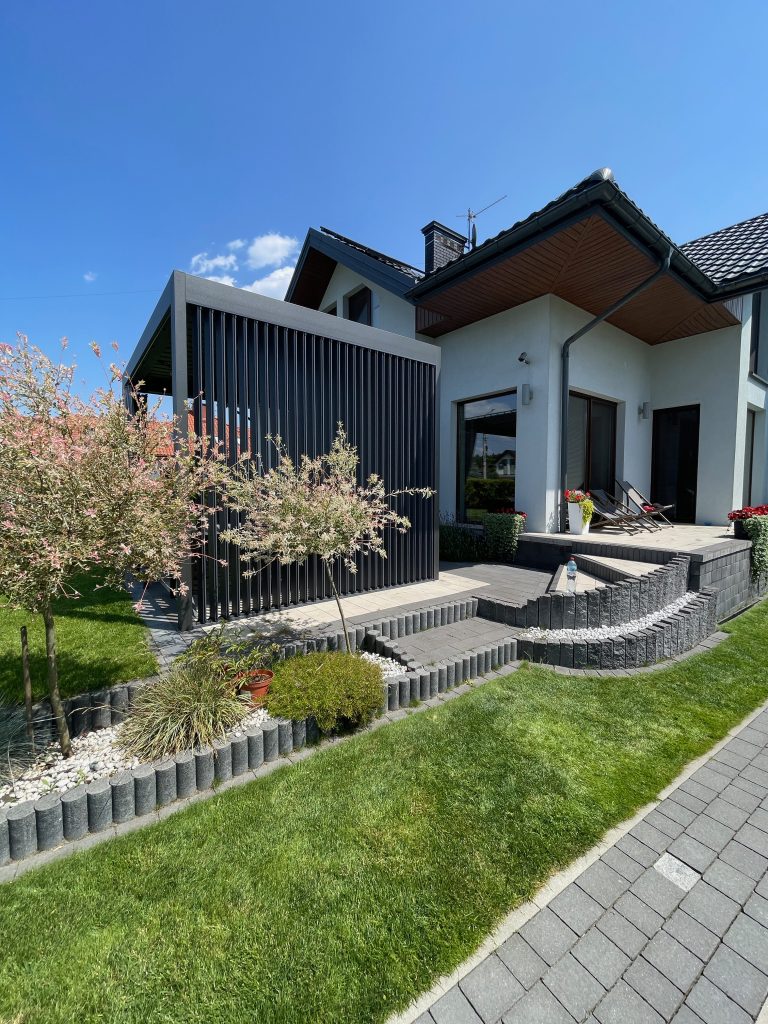
What to look for when choosing a garden pergola:
Choosing garden pergola, pay attention to a few key aspects:
- Material: The choice of material is crucial as it affects the durability and maintenance of the pergola. Wooden pergolas are popular for their natural appearance, but require regular maintenance. Aluminium or steel pergolas are more weather resistant and less maintenance intensive, but can be more expensive.
- Style and design: A garden pergola should blend in with the overall style of the garden and house. Classic wooden pergolas suit traditional gardens, while metal structures harmonise with modern homes and gardens. Also consider whether you want a freestanding pergola or one adjacent to the building. This can affect its style and functionality.
- Size and proportions: The size of the pergola should be proportionate to the size of the garden. A pergola that is too large can overwhelm a small garden, while one that is too small may not serve its purpose. Consider its optimum dimensions.
Height of pergola is usually between 200 and 250 cm. The floor area should correspond to the use of the pergola. Whether it is to be a lounge area or to function as an outdoor dining area, for example. If it is to provide comfort for several people at the same time, the length of its sides should be at least 2 metres. - Functionality: Determine what function you want your pergola to serve. If it is to be used as a place to relax, ensure there is adequate shade and space for garden furniture. If it is to support climbing plants, choose a structure that allows them to grow freely.
- Stability: It's a question of safety. Especially if you plan to hang a hammock or swing in the pergola. Also consider the pergola's resistance to weather conditions, especially strong winds.
- Workmanship: Precise finishing, no sharp edges, facing, painting without welds are examples. Also pay attention to the quality of the material and the solutions that protect the garden pergola from moisture.
- Budget: The cost of a pergola can vary considerably depending on the material, size and additional features. Determine your budget and compare the different options to find the best solution that meets your needs and objectives.
Wood or aluminium pergola?
Wooden garden pergolas have a natural, rustic look that blends well with traditional gardens and landscapes. They are certainly a classic and a good choice. Remember, however, that wood needs regular maintenance. It should be painted, varnished or stained. This will protect it from moisture, insects and the weather. A wooden pergola will also certainly be a lower expense than an aluminium one.
Aluminium pergolas are more durable and weatherproof than wooden ones. They require minimal maintenance. The cost of an aluminium pergola may be higher, but its longevity and low maintenance requirements can save you money in the long run. An aluminium pergola, however, will not suit every garden. The final choice depends on your preferences and possibilities.
Not just for the garden - a pergola for the balcony
A pergola can be a great addition to a balcony or terrace space. A pergola on a large balcony can create a shady and cosy corner for relaxation, protecting you from excessive sun and light rain. It can also support climbing plants to add greenery and natural charm to your balcony. Remember that the design of the pergola should suit the size of the balcony and not exceed its load-bearing capacity.
How to arrange a garden pergola?
Create a stylish and functional space for outdoor relaxation. Consider furniture made from pallets as pergola fittings. They will work great in this role, offering an interesting and inexpensive solution. You can start by making comfortable seats and tables from pallets, which can be easily adapted to the space available. Place soft cushions on the seats to add comfort and character to the styling. Potted and climbing plants, hanging lanterns and light garlands will complement the décor perfectly, creating an atmosphere conducive to relaxation.
How to care for a wood terrace pergola
A wooden pergola should be protected with wood preservatives, i.e. varnished or painted. This is not only an aesthetic solution, but an element of maintenance. It is also important to check the condition of the wood regularly for damage. It is also a good idea to clean the wooden garden pergola of accumulated dirt and dust, using mild cleaners and a soft brush. By carrying out these maintenance procedures, you can significantly extend the life of your pergola and keep it looking beautiful for many years to come.
Built-in garden pergola
You can significantly extend the life of your garden pergola by enclosing its side walls. The enclosure will protect the inside of the pergola from the effects of wind and precipitation. You can choose from different types of pergola side wall cladding. We recommend functional and aesthetically pleasing louvre panels wood or aluminium, as well as shutters.

